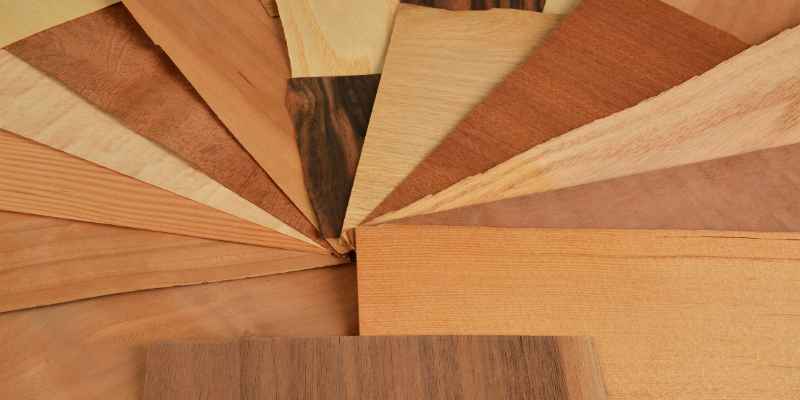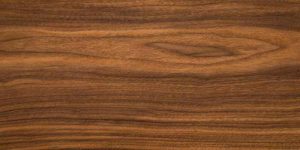Walnut wood has a distinct appearance with rich, dark brown color and prominent grain patterns. It is known for its deep, warm tones and can range from light to dark brown.
The wood often has a straight grain but can also exhibit waves or curls, adding to its unique beauty. The texture of walnut wood is typically medium to coarse, with a smooth surface that can be polished to a high sheen.
It is a popular choice for furniture, flooring, and cabinetry due to its durability and aesthetic appeal.
The Quest For Walnut Alternatives
When it comes to woodworking, walnut wood is highly sought after for its rich, dark color and beautiful grain patterns. However, due to the increasing demand and limited supply of walnut wood, woodworkers are on a quest to find suitable alternatives that offer similar characteristics. In this article, we’ll explore the popularity of walnut wood and the reasons why woodworkers are seeking alternatives to this coveted material.
Popularity Of Walnut Wood
Walnut wood is renowned for its deep, chocolate brown color and intricate grain patterns, making it a popular choice for furniture, cabinetry, and decorative woodworking projects. Its natural luster and ability to take on a smooth finish further contribute to its desirability among craftsmen.
Reasons For Seeking Alternatives
Woodworkers are seeking alternatives to walnut wood due to its limited availability and high cost. As the demand for walnut continues to rise, the supply becomes increasingly scarce, leading to inflated prices. Additionally, environmental concerns have prompted artisans to explore sustainable alternatives that offer similar aesthetics and workability.
Characteristics Of Walnut Wood
Color And Grain
Walnut wood is known for its rich, dark brown color, often with hints of purple or gray. The grain of walnut wood is usually straight, but it can also display a wavy or curly pattern, adding to its visual appeal.
Durability And Workability
Walnut wood is moderately hard and durable, making it suitable for a variety of woodworking projects. It is resistant to decay and can be easily worked with both hand and power tools, allowing for intricate designs and smooth finishes.
Mahogany: A Classic Substitute
When it comes to the rich and elegant appearance of walnut wood, mahogany serves as a classic substitute. With its deep, reddish-brown hue and lustrous finish, mahogany shares visual similarities with walnut, making it a popular choice for furniture making and interior design.
Visual Similarities
Mahogany and walnut both boast a rich, dark color palette, with subtle variations in grain pattern and texture. While walnut tends to feature straighter, more pronounced grain lines, mahogany is characterized by gentler, wavier patterns. Both woods exhibit a smooth, polished surface that highlights their natural luster, adding a touch of sophistication to any space.
Mahogany In Furniture Making
Mahogany’s versatility and durability make it an ideal choice for crafting exquisite furniture pieces. Its deep, reddish-brown tones complement a range of interior styles, from traditional to modern, adding warmth and character to the decor. Furniture makers often favor mahogany for its workability and the ease with which it can be carved and shaped into intricate designs, further enhancing its appeal in the world of woodworking.
Cherry Wood: An American Favorite
Cherry wood is one of the most popular choices for furniture and cabinetry in the United States. It’s easy to see why – cherry wood has a warm, reddish-brown hue that is both elegant and inviting. The wood also has a fine, straight grain that gives it a timeless, classic look. But what sets cherry wood apart from other woods like walnut?
Cherry’s Aging Process
One of the unique characteristics of cherry wood is how it ages. Over time, cherry wood will darken and mellow, eventually developing a rich, deep red color. This aging process is caused by the wood’s exposure to light and air, and it can take anywhere from a few months to a few years to fully develop. This natural aging process gives cherry wood furniture a unique, one-of-a-kind look that can’t be replicated with stains or finishes.
Comparing Costs With Walnut
While cherry wood is a popular choice for furniture and cabinetry, it can be more expensive than other woods like walnut. This is because cherry wood is a slow-growing tree that requires a lot of time and care to produce high-quality lumber. Additionally, cherry trees are susceptible to a variety of pests and diseases, which can make the wood more expensive to produce. However, many people feel that the unique beauty of cherry wood is worth the extra cost.
Overall, cherry wood is a beautiful and timeless choice for furniture and cabinetry. Its warm, reddish-brown hue and fine, straight grain make it a classic American favorite, and its natural aging process gives it a unique, one-of-a-kind look. While it can be more expensive than other woods like walnut, many people feel that the beauty and durability of cherry wood is worth the investment.
Birch Wood: The Understated Twin
Birch wood, often mistaken for walnut, boasts a subtle grain pattern and light color. The wood’s appearance resembles walnut, but with a more understated and delicate charm. It’s a popular choice for furniture and flooring due to its natural elegance.
Birch wood, often overshadowed by its popular counterpart walnut, possesses its own unique charm and versatility. In the world of woodcraft, birch is the understated twin that deserves recognition.
Birch Vs. Walnut Appearance
Birch: Light in color with subtle grain patterns.
Walnut: Darker hues with rich, prominent grain.
Uses In Woodcraft
- Birch: Ideal for furniture, plywood, and interior finishing.
- Walnut: Prized for high-end furniture and decorative veneers.
Ash Wood: The Sturdy Stand-in
Ash wood, a sturdy alternative to walnut, boasts a light color with prominent grain patterns. The wood’s appearance resembles that of walnut, making it a popular choice for furniture and interior design. Its durability and attractive aesthetic make it a sought-after option for various woodworking projects.
Ash wood is a reliable alternative to walnut due to its durability and strength.
Grain Patterns And Texture
Ash wood features prominent grain patterns and a smooth texture.
Ash’s Resistance To Shock
The wood’s shock resistance makes it ideal for high-traffic areas.
Ash wood is a versatile option that mimics walnut’s appearance and durability.
Grain Patterns And Texture
– Ash wood has distinct grain patterns and a smooth texture.
Ash’s Resistance To Shock
– Ash wood’s shock resistance suits high-traffic areas well.
Oak Wood: A Versatile Option
Oak wood, a versatile option, boasts a rich, warm hue resembling walnut. Its distinctive grain pattern adds elegance to furniture and flooring. Ideal for both traditional and modern designs.
If you’re looking for a versatile wood option that exudes elegance and sophistication, look no further than oak wood. This hardwood has been a popular choice for centuries due to its durability, strength, and beauty. Oak wood is a great option for a variety of projects and can match the elegance of walnut wood. Let’s explore the types of oak wood and how they can match walnut’s elegance.
Types Of Oak Wood
There are two main types of oak wood: red oak and white oak. Red oak is a popular choice due to its warm, reddish-brown hue and its distinctive grain pattern. Its open grain pattern gives it a unique texture and character. White oak, on the other hand, is known for its durability and strength. It has a subtle grain pattern and a light brown hue, making it a great option for a variety of projects.
Matching Walnut’s Elegance
While walnut wood is known for its deep, rich color and its intricate grain pattern, oak wood can match its elegance in its own way. Oak wood has a natural beauty that can be enhanced with the right finish. When stained with a darker color, oak wood can mimic the look of walnut wood. And because oak wood is more readily available and less expensive than walnut wood, it’s a great alternative for those on a budget.
In addition, oak wood can be used in a variety of projects, from flooring and furniture to cabinetry and trim work. Its versatility makes it a popular choice among homeowners and builders alike.
In conclusion, oak wood is a versatile option that can match the elegance of walnut wood in its own unique way. Whether you choose red oak or white oak, this hardwood is a great option for a variety of projects. Its durability, strength, and natural beauty make it a popular choice among homeowners and builders.
Exotic Alternatives: Iroko And Sapele

Iroko and Sapele are exotic wood alternatives that closely resemble the appearance of walnut. These richly toned woods offer a similar aesthetic and can be used as a substitute for walnut in various applications. Their unique grain patterns and warm hues make them an attractive choice for furniture and interior design projects.
While walnut is a popular choice for wood enthusiasts, there are other exotic alternatives that can add unique character to your furniture. Iroko and Sapele are two such alternatives that have gained popularity in recent years.
Iroko: The African Teak
Iroko, also known as African Teak, is a hardwood that is native to West Africa. Its color ranges from a light yellow to a deep brown, with a coarse texture and interlocking grain. Iroko is a highly durable wood that is resistant to decay, making it a great choice for outdoor furniture. It is also easy to work with and can be finished to a high shine. Iroko is a sustainable choice for those who are environmentally conscious, as it is readily available and grows relatively quickly.
Sapele’s Ribbon Patterns
Sapele is another African hardwood that is similar in appearance to mahogany. It has a reddish-brown color with a medium to coarse texture and interlocking grain. What sets Sapele apart is its distinctive ribbon patterns, which are caused by the way the wood is sawn. Sapele is a durable wood that is resistant to rot and decay, making it a popular choice for doors and windows. It is also a great choice for decorative veneers and musical instruments due to its beautiful patterns.
In conclusion, while walnut is a great choice for wood enthusiasts, there are other exotic alternatives that can add unique character to your furniture. Iroko and Sapele are two such alternatives that are highly durable and sustainable. Iroko’s coarse texture and resistance to decay make it a great choice for outdoor furniture, while Sapele’s ribbon patterns make it a popular choice for decorative veneers and musical instruments.
Synthetic And Engineered Woods
When it comes to Synthetic and Engineered Woods, walnut is a popular choice due to its versatility and durability.
Advancements In Manufactured Woods
Recent innovations have led to manufactured woods that closely resemble natural walnut.
These engineered products offer consistent quality and are available in various finishes.
Environmental And Cost Benefits
Manufactured woods contribute to sustainable forestry practices and reduce deforestation.
They are often more affordable than solid walnut, making them a cost-effective option.
Tips For Choosing The Right Wood
Walnut wood offers a rich, dark brown color with beautiful grain patterns. Its natural elegance makes it a popular choice for furniture and flooring. When choosing walnut wood, consider its durability and compatibility with your desired aesthetic to create a timeless and stunning look for your space.
Assessing Project Needs
Consider the size and purpose of your project when choosing wood.
Balancing Budget And Quality
Quality should not be compromised for budget constraints.
Tips for Choosing the Right Wood
When selecting wood for a project, it’s crucial to assess your specific needs. Consider the size, purpose, and location of the project to determine the most suitable type of wood. Balancing budget and quality is essential, as you want to invest in a durable material that fits your financial constraints.
Staining And Finishing Techniques
Wood staining and finishing techniques can transform the appearance of any piece of wood, giving it the rich and elegant look of walnut. By using the right techniques, you can achieve a deep, dark brown color that mimics the natural beauty of walnut wood.
Walnut wood is a popular choice for furniture and home decor due to its rich, warm color and unique grain patterns. However, to achieve the desired look for your walnut wood pieces, it’s important to use the right staining and finishing techniques. In this section, we’ll cover how to achieve a walnut finish and how to protect your woodwork.
Achieving A Walnut Finish
To achieve a walnut finish on your woodwork, you’ll need to start with the right stain. Walnut stain is readily available at most hardware stores, but you can also create your own by mixing brown and black stains together. Apply the stain evenly to your wood surface with a brush or cloth, and then wipe away any excess with a clean cloth. Repeat this process until you achieve the desired depth of color.
Once your stain has dried, it’s time to apply a finish. A clear coat of polyurethane is a popular option for protecting your walnut wood and giving it a glossy finish. Apply the polyurethane in thin, even coats, allowing each layer to dry completely before applying the next. Sand lightly between coats to ensure a smooth finish.
Protecting Your Woodwork
To ensure your walnut woodwork stays looking its best, it’s important to take steps to protect it. Here are some tips to keep in mind:
- Use coasters or placemats to protect your wood from spills and scratches.
- Avoid placing your wood furniture in direct sunlight, which can cause it to fade and dry out.
- Dust your wood regularly with a soft cloth to prevent buildup of dirt and grime.
- Use furniture wax or polish to keep your wood looking shiny and new.
By following these staining and finishing techniques and taking steps to protect your woodwork, you can enjoy the beauty of walnut wood for years to come.
Sustainability And Ethical Considerations
When considering wood choices, it’s important to also think about the sustainability and ethical implications of those choices. This can have a significant impact on the environment and the communities involved in the production of wood products.
Impact Of Wood Choices
Choosing the right type of wood can have a substantial impact on the environment and wildlife habitats. Unsustainable logging practices can lead to deforestation and loss of biodiversity, while ethical wood sourcing can help preserve ecosystems and promote healthy forest management.
Certified Sustainable Options
When looking for sustainable wood options, it’s essential to consider certified sources such as the Forest Stewardship Council (FSC) or the Programme for the Endorsement of Forest Certification (PEFC). These certifications ensure that the wood has been responsibly harvested and that social and environmental standards have been met.

Frequently Asked Questions
What Are The Characteristics Of Walnut Wood?
Walnut wood is known for its rich, dark color, straight grain, and durability. It offers a luxurious appearance and is commonly used in high-end furniture and woodworking projects.
Is Walnut Wood Expensive Compared To Other Types?
Yes, Walnut wood is considered a premium wood and is priced higher than many other types of wood. Its scarcity, unique appearance, and quality contribute to its higher cost in the market.
How Should Walnut Wood Furniture Be Maintained?
To maintain Walnut wood furniture, regularly dust with a soft cloth, avoid direct sunlight exposure, and use a mild wood cleaner for occasional cleaning. Applying furniture polish can help preserve its luster and beauty.
What Are The Common Uses Of Walnut Wood?
Walnut wood is popularly used in crafting furniture, flooring, cabinetry, and decorative items. Its rich color and durability make it a preferred choice for high-quality woodworking projects.
Conclusion
Walnut wood is a beautiful and versatile material that adds a touch of elegance to any space. Its rich, dark color and distinct grain pattern make it a popular choice for furniture, flooring, and cabinetry. With its durability and natural resistance to decay, walnut wood is not only aesthetically pleasing but also practical.
Whether you’re looking to create a rustic farmhouse feel or a modern, sleek design, walnut wood is sure to impress. So, next time you’re considering wood options, don’t overlook the timeless beauty of walnut.


